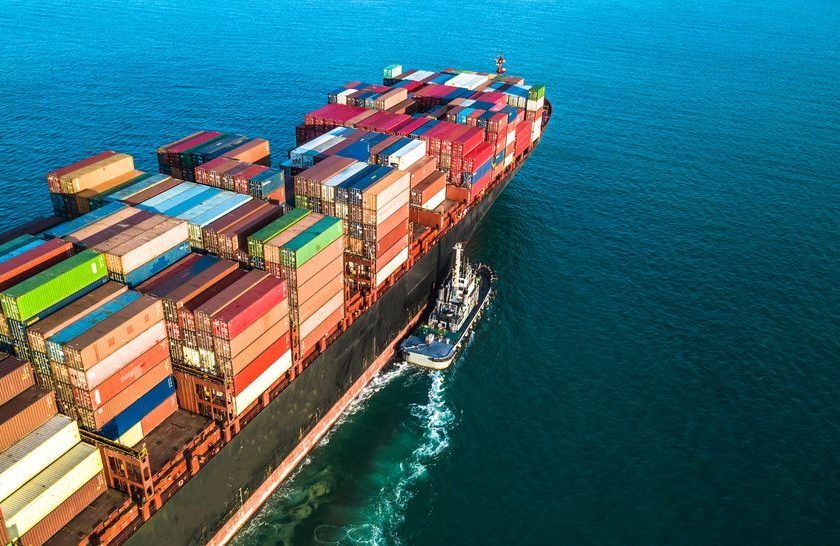Iran to release crew of seized MSC Aries
NewsIran’s Foreign Minister announced plans to release the crew of the MSC Aries, following its seizure in the Strait of Hormuz on April 13.
The seizure of the MSC Aries is not just a maritime incident; it is a reflection of the intricate interplay between geopolitics and global trade.

As the container shipping market closely scrutinizes the recent seizure of the MSC Aries, speculation mounts over its potential ramifications on freight container imports.
“An already bad situation in the Red Sea and the Gulf of Aden has just got worse and could put ocean freight container imports and oil exports in the Middle East at risk,” Peter Sand, Xeneta Chief Analyst, says, commenting on the possible consequences of the seizure of MSC Aries on April 13.
Reports indicate that the MSC Aries, with 25 crew members aboard, was seized by the Iran Revolutionary Guards approximately 50 nautical miles northeast of Fujairah, in proximity to the Strait of Hormuz, which serves as the gateway to the Arabian Gulf.
“We don’t yet know the full details of the incident in the Strait of Hormuz, but any widening of the conflict which has already resulted in huge disruption to ocean freight services in the Red Sea region would be extremely concerning,” Sand continues.
“For example, Dubai is a regional hub for imports as well as sea-air corridors, with containers arriving by ocean via the Strait of Hormuz for onward travel by air to Europe and North America. If ships are impacted from sailing into the Arabian Gulf then the disruption would be considerable,” Peter Sand concludes.
According to Vizion, a container tracking data platform, the MSC Aries was carrying a significant amount of cargo, with shipments totalling over 1300 TEU and a cargo value exceeding US$50 million.
Among the companies named in these shipments are heavyweights like Saudi Basic Industries Corporation, Exxon Mobil, and Dow Chemical, indicating the importance of the cargo aboard.
Where were the goods headed? Some countries of note that were named as the Destination Country for a significant number of shipments included:
It should be noted that Israel was a minimal country named as the destination for these goods, with only 21 TEU identified onboard, worth approximately US$3M.
Furthermore, according to Vizion’s TradeView data, petrochemicals, plastic polymers, and steel products emerge as the most significant products aboard the MSC Aries, reflecting the impact across several global industries. Importantly, none of the companies involved in these shipments have ties to Israel, underscoring the complexity of regional dynamics.
On the other hand, Lars Jensen, an expert in the container shipping industry and CEO of Vespucci Maritime, shared his thoughts on how this crisis could affect changes in cargo insurance:
“Double-check your cargo insurance – not only in terms of what it covers but also in terms of whether it is void if your cargo is suddenly in a warzone, even if the planned journey and/or vessel was not supposed to take you into a warzone. Possible increased risk premiums to and from the Persian Gulf area as well as the Gulf of Oman – not necessarily labelled as a risk premium but potentially as PSS, Congestion Surcharge, War Risk Surcharge or some new type of acronym.”
Jensen further advises: “What is your contingency plan in case of a partial closure of the Strait of Hormuz? Partial in the sense that some carriers and/or some vessels will stop going through. Your cargo might then conceivably be left in transhipment hubs elsewhere and need onward carriage. You may not always be able to predict where this might happen but have a plan ready for how to deal with it if it arises. What were the practical problems you ran into when the global carriers started avoiding the southern Red Sea, and what lessons have you learned from that to apply to a possible Strait of Hormuz problem?”
“It is of course possible that a full closure of the Strait of Hormuz could happen, but presently it appears that the scenario to plan for might more resemble the one in the southern Red Sea where some shipping lines will still operate and some will not. And some lines might operate some of their vessels, leaving other vessels to be relocated elsewhere,” the CEO of Vespucci Maritime adds. “Should a partial closure of the Strait of Hormuz ensue, shippers in other locations should also have contingency plans ready to tackle escalating port congestion problems in for example Sri Lanka, Singapore, Port Klang and Tanjung Pelepas. Indian ports could also become more problematic.”
“Finally, it is clear that threats against shipping made by Iran, and their proxies in Yemen, have over the past 6 months not been idle. It might therefore be prudent to recollect the threat made by an Iranian Revolutionary Guards commander in December to also target shipping in the Mediterranean Sea. Keep in mind that groups in Algeria have received attack drones from Iran. And as drones and missiles have the range to hit Israel, they could also impact shipping in the East Mediterranean,” Jensen wrote on LinkedIn.
By subscribing you will have: